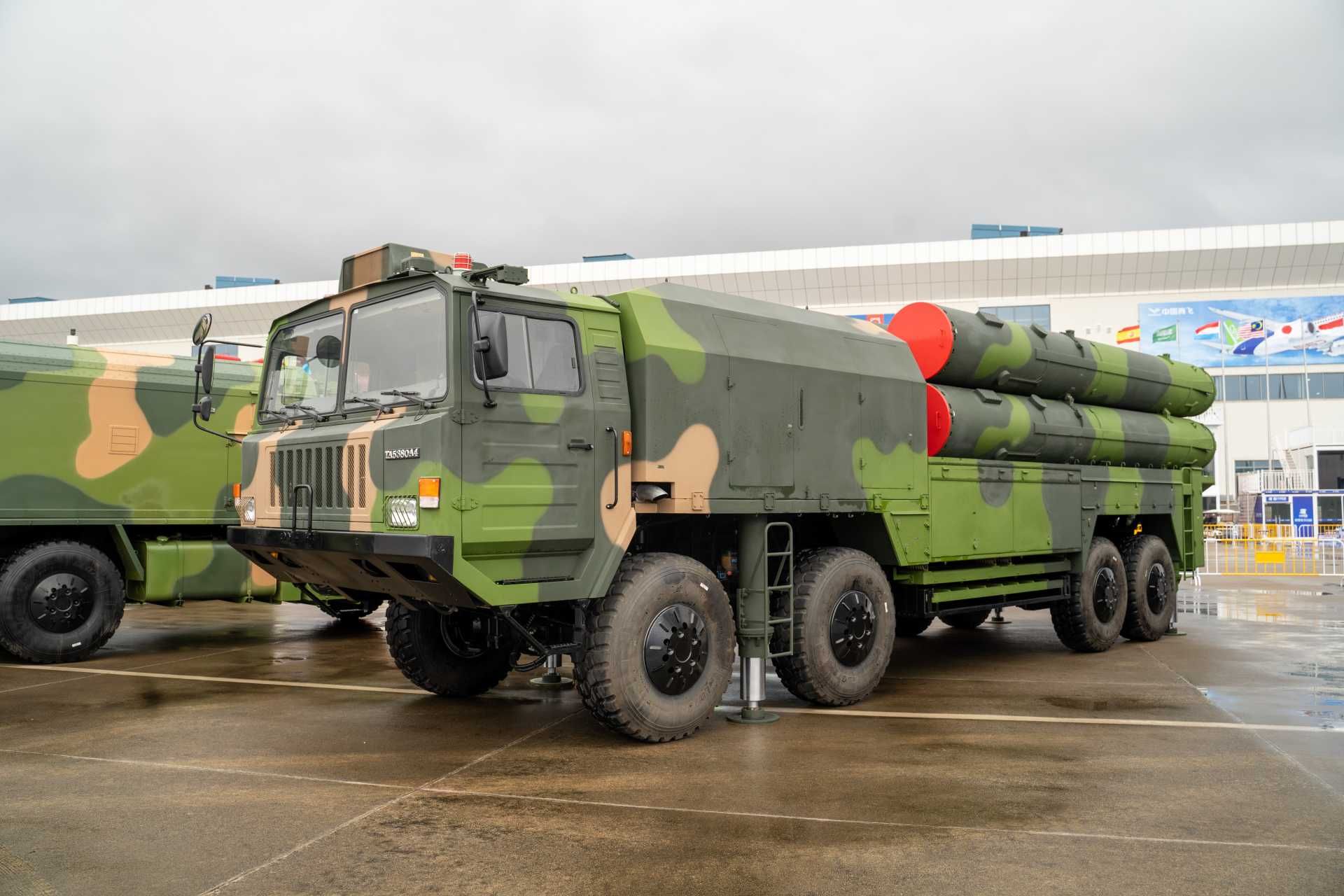Air Defense Vehicles.
HQ-19.

The HQ-19 is a long-range surface-to-air defense missile system developed by the People's Republic of China. Designed as a high-altitude interceptor, it is intended to counter medium-range ballistic missiles (MRBMs), hypersonic glide vehicles, and satellites in low Earth orbit (LEO). With both anti-ballistic missile (ABM) and anti-satellite (ASAT) roles, the HQ-19 enhances China's integrated missile defense and space control capabilities.
Country users: China, Pakistan
Description
The HQ-19 is a long-range surface-to-air defense missile system that serves as a technologically evolved variant of the HQ-9 platform. Development of the system began in the late 1990s under China’s 863 Program, a national initiative aimed at accelerating strategic and high-technology defense capabilities. The system’s first successful missile test occurred in 1999, demonstrating its ability to intercept ballistic targets at altitudes up to 200 kilometers and speeds approaching 10,000 meters per second. Over the following decade, further testing and refinements were carried out, culminating in certification by the Chinese Ministry of National Defense in 2021.
Although it reportedly entered limited service by 2018, the HQ-19 was first displayed publicly at the 2024 Zhuhai Airshow, confirming its operational maturity and readiness for full deployment. The system is engineered to intercept MRBMs during both midcourse and terminal flight phases and is also capable of targeting hypersonic glide vehicles and satellites operating in LEO. This broad operational scope enables it to serve as a dual-purpose ABM and ASAT platform, reinforcing China’s air and space superiority doctrine.
The HQ-19 employs a kinetic kill vehicle to destroy targets through direct impact, eliminating the need for conventional explosive warheads. This approach increases intercept precision and reduces collateral effects. The system operates as part of a layered defense network and complements other platforms such as the HQ-9 and the more advanced HQ-26, forming a key pillar in China’s anti-access/area denial (A2/AD) strategy. It is often compared to Western systems such as THAAD and SM-3 due to its performance envelope and mission profile.
HQ-19 variants:
The standard variant of the HQ-19 is equipped for intercepting medium-range ballistic missiles and engaging satellites in low Earth orbit. While no distinct variants have been publicly disclosed, future configurations are expected to include enhancements for extended range, increased sensor fusion, or improved counter-hypersonic capabilities, potentially through integration with more advanced command and control networks or future systems like the HQ-26.
Technical Data
-
Launcher Unit
The HQ-19 uses a mobile launcher vehicle based on the TAS5380 8×8 military truck chassis. Each launcher is fitted with six cylindrical launch tubes mounted vertically at the rear of the truck. The system uses a cold-launch method, where the missile is initially ejected from the launch tube using gas pressure before the main rocket motor ignites. This method improves safety and operational flexibility, allowing for quicker setup and reduced stress on the launch platform. The launcher is also equipped with hydraulic stabilizers and onboard power units, facilitating rapid deployment and autonomous operation.
-
Missile
The missile of HQ-19 itself is a two-stage solid-fuel interceptor that utilizes a dual-pulse rocket motor to provide thrust during different flight phases. Constructed from lightweight carbon fiber materials, it is engineered to endure extreme G-forces, tolerating up to 60G during maneuvering. The missile is approximately 7 meters in length and features a diameter of around 0.5 meters. It carries a kinetic kill vehicle (KKV) as its warhead, designed to neutralize targets by direct impact in exo-atmospheric conditions. The guidance suite comprises an active radar seeker coupled with an advanced infrared sensor mounted on the sides of the missile to mitigate atmospheric heating effects during high-speed flight. This combined guidance enables highly accurate target interception at long ranges and altitudes.
-
Mobility
The HQ-19 is based on the TAS5380 8×8 high-mobility military truck produced by Taian Special Vehicle Company. It is powered by a 517-horsepower Deutz turbocharged diesel engine that allows it to reach speeds of up to 80 kilometers per hour on-road. With an operational range of 800 kilometers, the vehicle is capable of transporting the missile system over diverse terrains. Measuring roughly 11 meters in length, 3 meters in width, and 3 meters in height, the TAS5380 provides ample space and structural support for the heavy payload, while its all-wheel drive and air suspension system ensure operational flexibility and off-road performance.
-
Radar and Communication Systems
The HQ-19 system is guided by the Type 610A active electronically scanned array (AESA) radar, which boasts a detection range of up to 4,000 kilometers. This radar provides long-range tracking and midcourse guidance updates to the interceptor missile. It is highly resistant to electronic countermeasures and is capable of tracking multiple high-speed, high-altitude threats simultaneously. The radar network is integrated with mobile command and control centers, secure communication systems, and target acquisition radars, ensuring synchronized data flow and rapid threat response within a distributed air defense grid.
-
Combat Use
The HQ-19 is designed to engage medium-range ballistic missiles, hypersonic glide vehicles, and low-orbit satellites. It intercepts ballistic threats during their midcourse and terminal flight phases, using direct-impact kinetic destruction to ensure precise neutralization without explosive detonation. Its capacity to operate at the exo-atmospheric level allows it to support both homeland defense and strategic deterrence missions. The system’s mobility enables rapid repositioning to defend key assets, while its high-altitude capabilities position it as a key element in China’s layered missile and space defense strategy.
Specifications
-
Type
Long-range surface-to-air defense missile system
-
Country users
China, Pakistan
-
Designer Country
China
-
Armament
One missile per tube, 6 tubes per launcher
-
Altitude Missile
Up to 200 km
-
Guidance Systems
Active radar homing + side-mounted InfrRed seeker
-
Radar Components
Type 610A phased-array radar (4,000 km range)
-
Targets types
Medium-Range Ballistic Missiles (MRBMs), Hypersonic Glide Vehicles (HGVs), Low Earth Orbit Satellites (LEO Satellites), High-Speed Aerial Targets in Midcourse Phase, High-Speed Aerial Targets in Terminal Phase.
-
Range Missile
Up to 3,000 km (ballistic missile targets)
-
Launcher Truck
TAS5380 8×8 high-mobility military truck














































